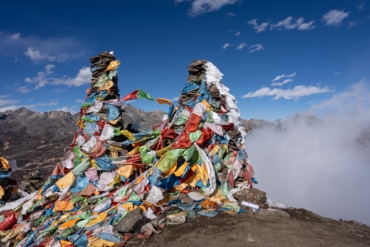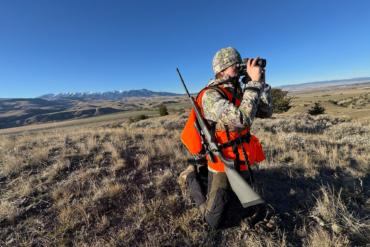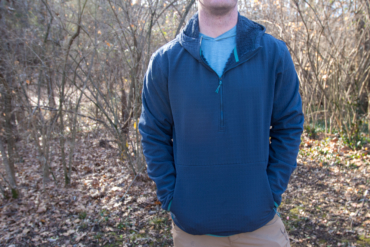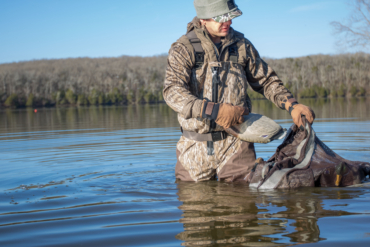It’s early winter, and it’s sleeting outside. But you want to go on a trail run. So you put on a layer — a wool or a synthetic base on top. Then it’s time for a jacket. Rainwear? Too clammy for a run. Softshell? No, it’ll soak through. Ah, yes, a hardshell jacket — a waterproof-breathable shell that will protect from the sleet and the sloppy skies, but will also wick your sweat from the inside as you run. Dry as a bone, from the inside and the out.
In a perfect world, the hardshell solution would be true. In our real world outdoors, the theory of the truly “waterproof-breathable” shell, which has been touted for decades, is often a half-truth at best. The waterproof side is bonafide. Breathable? Not so much.

To be sure, modern waterproof-breathable hardshells are far superior to rain slickers, windbreakers and their ilk. Hardshells are comfortable for many outdoors activities, including hiking, camping, and lift-serviced skiing. Hardshells are king when it’s cold and blowing, and they literally save lives on high mountains and in desolate places where the elements can kill. (Indeed, that is me in the back of the line in the photo above, a cold, snowy, iffy morning in the wilds of Patagonia last winter where hardshells saved the day.)
But when an active person’s aerobic levels spike, when you start to sweat inside your jacket, the current waterproof-breathable crop can rarely keep up.
When you talk waterproof-breathable, or “wp/b,” you’re talking about W. L. Gore & Associates Inc. and its eponymous GORE–TEX product, which employs a membrane of a compound called ePTFE (or “expanded polytetrafluoroethylene” if you want the lab-coat speak). But you’re also talking about eVent, a membrane from a subsidiary of General Electric Company popular on many jackets. Then there is Mountain Hardwear, Patagonia Inc., Columbia Sportswear Company, and probably a dozen more brands that have proprietary or private-label waterproof-breathable outerwear. The news this week, as highlighted further on, is that Polartec LLC is jumping into the wp/b game, too.

Beyond Gore and its polytetrafluoroethylene, the membranes are made from polyurethane, polyetheleyne, and other fancy compounds not often discussed outside a science lab. The secret sauce in each solution — the “membranes” — are thin sheets of microscopically-porous material. They have holes small enough to let air out — but not let a drop of water in. As long as your jacket’s seams are taped and the membrane is not damaged, a good hardshell jacket can stay watertight for years.
But waterproofness has never been the weak link. It’s that old breathable side where it’s difficult to compete. Hardshells in recent years have seen a backlash from outdoors types looking for more air. The softshell jacket, which was popularized in the 1990s and built up by fabric makers like Schoeller and Polartec, offers a non-waterproof — but highly breathable! — option against the crinkly hardness of a hardshell. Softshells and other non-waterproof jackets are the uniforms of most active outdoors types. For me, a hardshell stays in my backpack at all times. It’s an essential tool and an insurance plan. But until the sky opens up or the wind starts whipping, I avoid wearing hardshells at all cost.
But wait! In 2011, hardshells are coming back. This autumn, in anticipation of products that for the most part will be on the market a year from now, the outdoors press was inundated with announcements on “new and better” hardshell solutions, including a new offering from the originator (Gore), big news from Mountain Hardwear, and a substantial announcement from a brand that built its business on the back of softshells and synthetic fleece.

Polartec would be the name of that fleece-maker mentioned above. Since the 1980s, when the Massachusetts company invented polar fleece, all things soft, warm and insulating have been company hallmarks. But an evolution through fleece, softshells, into technical layers, and, finally, to wp/b membrane types, has marched Polartec to a brave new vantage point. In 2011, with several partner brands, the company will unveil its first waterproof-breathable hardshell fabric alternative.
NeoShell is the name of the Polartec product, and as the moniker hints it’s being touted as something revolutionary and new — the “most breathable waterproof fabric on the market,” to be exact. While the basic concept of NeoShell is fundamentally not new — it’s a polyurethane-based product that employs a thin, microscopically-porous material as a membrane to repel water and breathe — Polartec says NeoShell is different from GORE–TEX in that it is highly “air permeable.”
Translation: While other membranes are airtight, NeoShell lets a tiny bit of air get in through a hardshell fabric. Here’s an official explanation from Polartec literature: “NeoShell is completely waterproof but unlike most hardshells on the market today with zero airflow, NeoShell allows actual air permeability. Even a tiny amount of air permeability, imperceptible from a wind chill standpoint, accelerates moisture vapor transport significantly.”
continued on next page. . .





